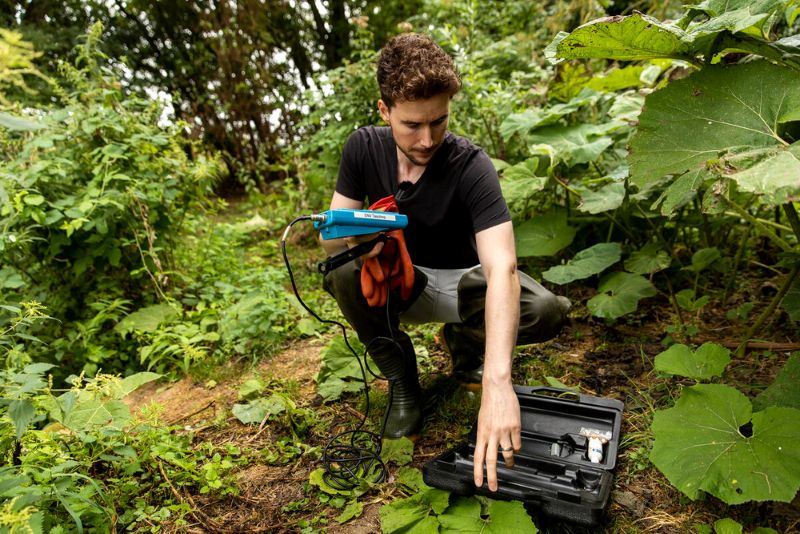
Treated effluent water was being discharged from Ingoldisthorpe Water Recycling Centre (WRC) directly to the River Ingol. Although nutrient levels were in line with environmental permits, the rare chalk-fed river was still recording levels of ammonia and phosphate that could accumulate and cause harm.
Usually, further reduction of nutrient levels is achieved through nutrient stripping techniques, which are both costly and carbon intensive. We were keen to explore a natural alternative, having successfully created and trialled a treatment wetland on the river Mun with encouraging nutrient-reduction results.
We conducted a feasibility study to determine the necessary improvements in water quality. Following this, we embarked on a pioneering ICW project on land next to Ingoldisthorpe WRC.
Completed in 2018, the 1-hectare Ingol ICW consists of four interconnected shallow pools. The first pool receives the used, but treated, water from the WRC. The pools were planted with 25,000 native wetland plants, such as iris, watercress, water mint and marsh marigold, to purify the water by absorbing the remaining nutrients. Once the water has filtered through each of the pools, it is released from the fourth cell into the nearby River Ingol.

After just one year since completion, mean nitrate and phosphate concentrations were found to reduce by approximately 30% across the Ingol ICW, whilst nutrient loading to the River Ingol was reduced by approximately 70%. These results have a reduced performance relative to the Mun ICW (mean nitrate and phosphate concentrations were reduced by ~63% across the wetland, whilst nutrient loadings were reduced by ~57%), however, this can be explained by the lack of well-developed plant-microbial interactions during the first year of operation (Cooper et al., 2020).
In addition to reducing nutrient levels associated with sewage effluent discharge, the wetland site has also become a valuable habitat for a wide range of pollinating insects, bats, invertebrates, birds and amphibians. Furthermore, the site has hosted numerous knowledge-exchange workshops and engagement activities with government bodies, regulators, water companies, local community groups and other organisations.
Ingol ICW is currently being assessed for a wide range of additional benefits, including carbon sequestration and capture of microplastics, pharmaceuticals and PFAS ‘forever chemicals’.
It is important to note that measures to target nutrient pollution from non-sewage sources (e.g. agricultural fertilisers and household products) are also required to reduce eutrophication risk.
Since the Ingol was built, two further ICWs have been installed at Langham and Stiffkey, with more in the pipeline.
This project was funded by Anglian Water, delivered in partnership by Norfolk Rivers Trust and the Environment Agency, and constructed by William Morfoot Ltd.
The Mun ICW was funded by the Department for Environment, Food and Rural Affairs and The North Creake Trust and delivered in partnership between Norfolk River Trust, the Environment Agency and Anglian Water.
With thanks to the landowner for enabling this project to take place on their land.
Reference: Cooper, R. J., Hawkins, E., Locke, J., Thomas, T., & Tosney, J. (2020). Assessing the environmental and economic efficacy of two integrated constructed wetlands at mitigating eutrophication risk from sewage effluent. Water and Environment Journal.
Additional research outputs:
van Biervliet, O., McInnes, R.J., Lewis-Phillips, J., & Tosney, J. (2020). Can an integrated constructed wetland in Norfolk reduce nutrient concentrations and promote in situ bird species richness? Wetlands 40(5) 967 - 981.
Warren, R. J., Cooper, R. J., Mayes, A. G., Nolte, S., Hiscock, K. M., & Tosney, J. (2024). Sewage derived microplastic and anthropogenic fibre retention by integrated constructed wetlands. Water, Air, & Soil Pollution, 235(6), 361.
We use Mailchimp as our marketing platform. By clicking subscribe, you acknowledge that your information will be transferred to Mailchimp for processing. Learn more about Mailchimp's privacy practices here.
